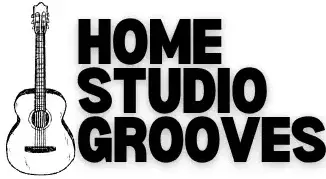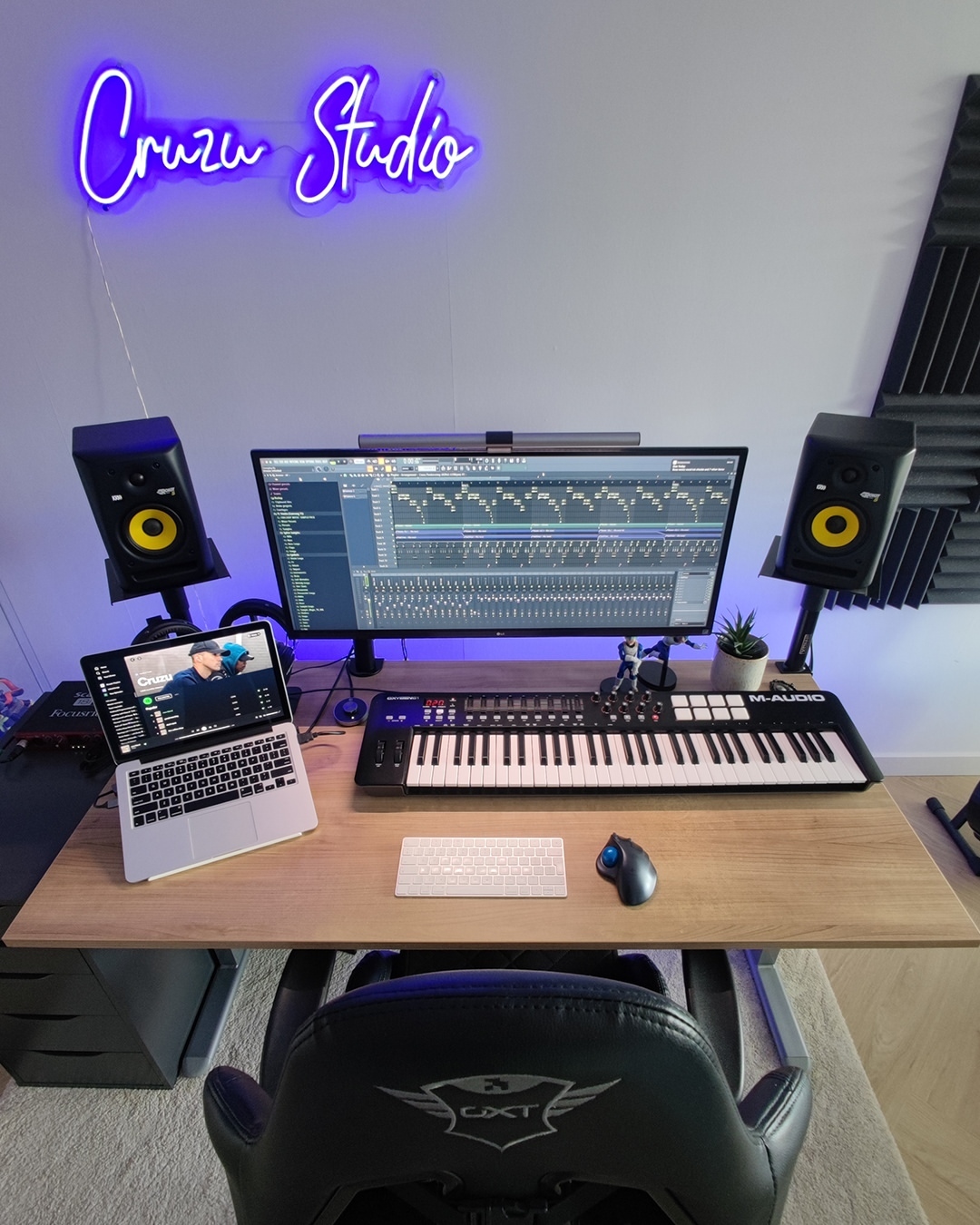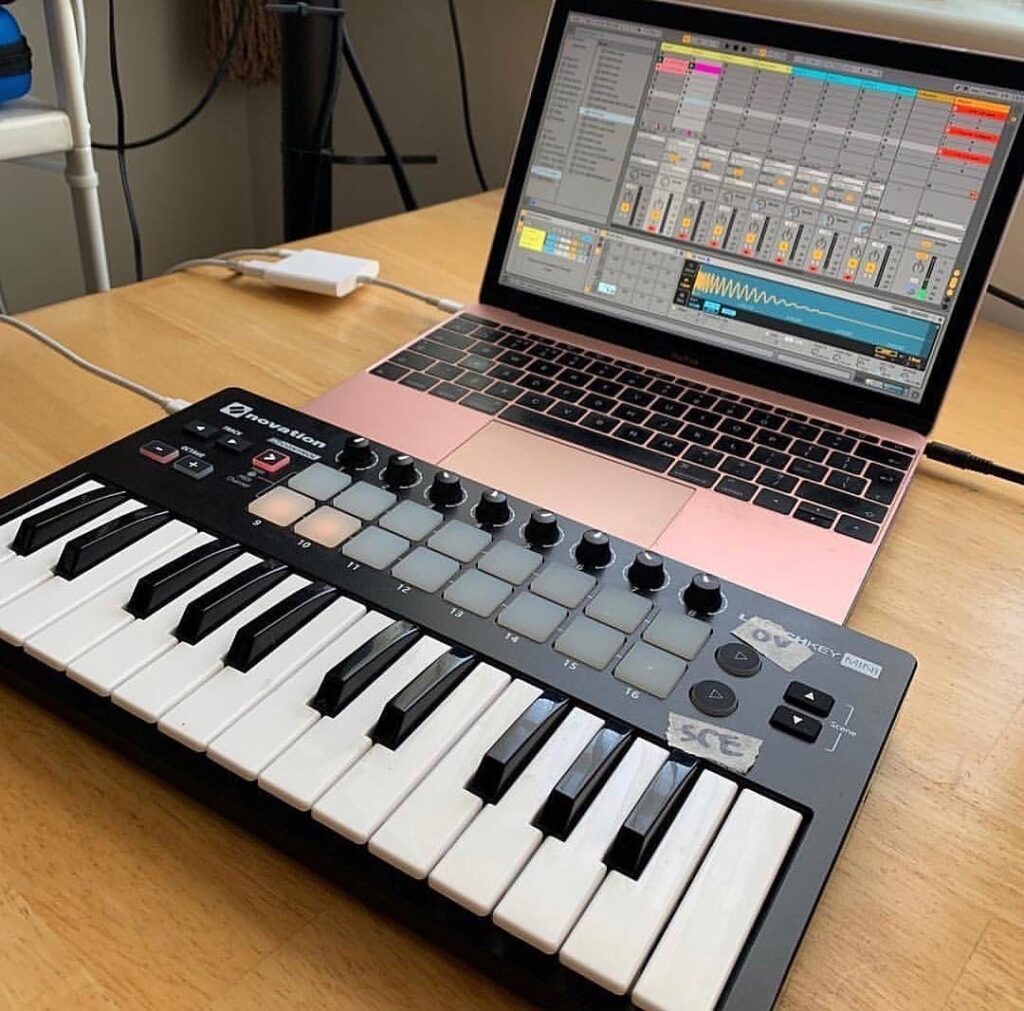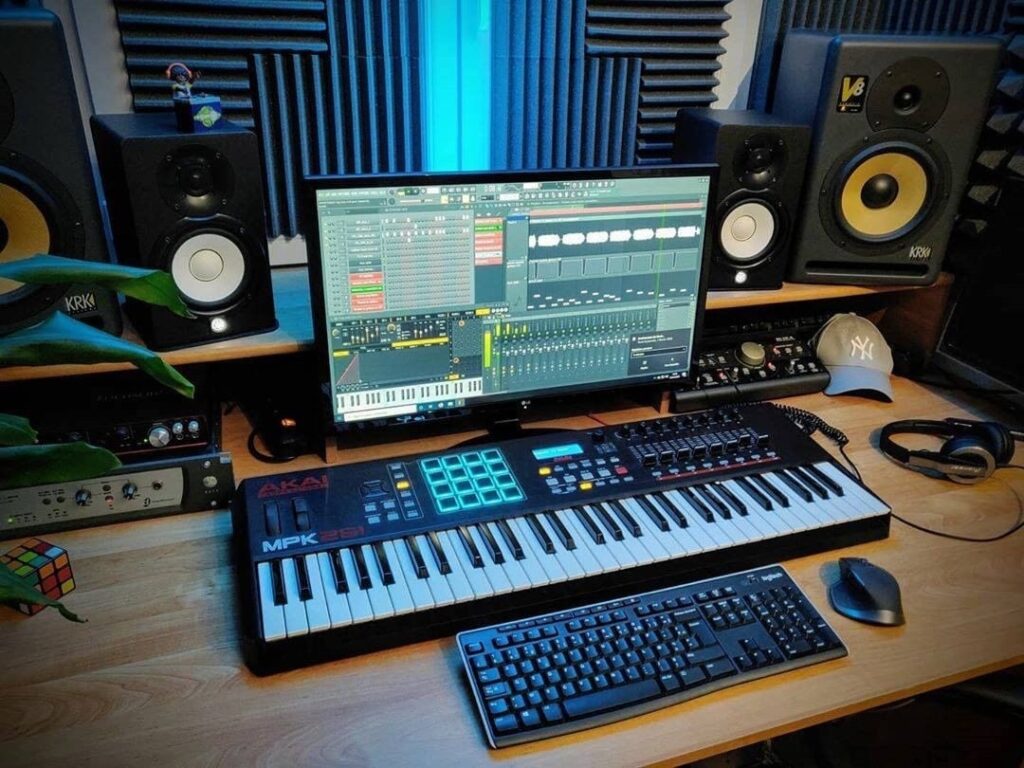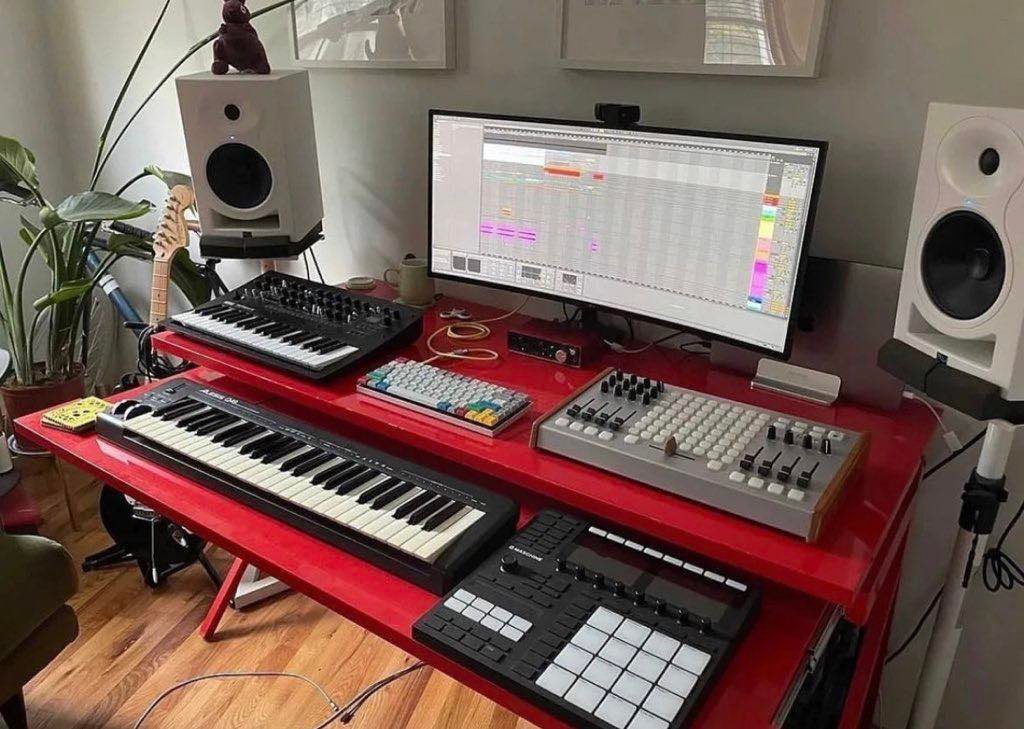Choosing between FL Studio and Ableton Live is a common struggle for music producers. Both are professional tools with strong communities behind them.
The real challenge isn’t picking the most popular DAW. It’s finding the one that fits how you actually work. Your workflow is how you turn ideas into finished tracks. If the software doesn’t match your process, it can slow you down or break your creative flow.
This guide breaks down how each DAW supports different ways of working. Some producers build from loops, others work in a straight line. Some prefer detailed MIDI editing, while others focus on samples and live performance.
By the end, you’ll understand how each DAW aligns with your habits, your genre, and your style of creating music. The goal is to help you choose the one that supports your creativity instead of getting in the way.
Understanding Workflow in Music Production
Before looking at the details of each DAW, it’s important to understand what workflow philosophy means in music production. This includes your habits, creative approach, and how you move from idea to finished track.
Some people build songs from start to finish in a straight line. Others prefer to catch small ideas and piece them together later. Some focus on details early, while others sketch out full tracks quickly and then clean them up.
Most DAWs can support different ways of working, but each one leans a certain way. FL Studio and Ableton Live reflect different approaches to making music. Knowing their style can help you decide which one fits yours.
Learning Curve and Community Support
If you’re new to music production, the learning curve matters just as much as the features. Some DAWs let you get started fast.
Others take more time to figure out but reward you later with advanced control.
FL Studio is known for being beginner-friendly. The layout is clean, and you can make your first beat in minutes using the step sequencer. There’s also a huge YouTube community full of beginner tutorials. Even the help docs and tooltips inside the software are clear and helpful.
Ableton Live feels more complex at first. The dual-view system (Session View and Arrangement View) can confuse new users. But once you understand the layout, it becomes powerful. There’s a solid official manual, lots of high-quality courses, and a passionate online fanbase.
Both DAWs have massive communities, active Reddit threads, Discord groups, and tons of free templates, sample packs, and walkthroughs.
If you ever get stuck, chances are someone has already solved the same problem and made a video about it.
FL Studio: The Pattern-Based Workflow Champion
FL Studio is known for its easy-to-use pattern-based system. You build parts of your song, like drum beats or melodies, as patterns. Then you arrange those patterns into full songs.
The Channel Rack is where all your instruments and samples live. It gives you a clear view of what is in your track. The step sequencer helps you quickly build drum parts, then layer in bass and melodies.
FL Studio’s Piano Roll is one of the best in the business. You can edit every part of your melody with detail. Features like Ghost Notes help you stay in key and create strong chords.
Deep Dive: FL Studio’s Pattern Architecture
FL Studio treats patterns like musical phrases. A pattern could be a 4-bar drum loop, an 8-bar melody, or anything else. Each pattern works on its own, which gives you flexibility when arranging.
You can mix patterns with different lengths. For example, a 4-bar hi-hat pattern and an 8-bar melody can play together. FL Studio handles the looping so you don’t have to worry about timing issues.
In the Playlist window, you lay out patterns like puzzle pieces. You can paint them across your timeline, building your full song from simple pieces.
FL Studio Workflow Strengths
- Beat-Making Speed: The step sequencer makes building drum loops fast and fun. You can tweak rhythms, swing, and timing with ease.
- Modular Song Building: Because patterns are separate, you can build a large library of ideas. Try different combinations to find what works best.
- Clear Visual Layout: The Channel Rack and Playlist make it easy to see your entire song. Color coding and names help you stay organized.
- Beginner Friendly Yet Deep: FL Studio is easy to start with, but advanced users can still create complex projects using the same workflow.
- MIDI Editing Power: The Piano Roll lets you do deep editing with tools for chords, scales, and precise timing.
Stock Plugins and Native Instruments Workflow
The tools that come built into your DAW can make or break your workflow. If you don’t have to install a bunch of third-party plugins, you can move faster and stay focused on making music.
FL Studio includes solid built-in synths and effects. The Fruity Parametric EQ 2 is a favorite for shaping sounds visually. You also get tools like FLEX, Harmor, and Sytrus for sound design, plus a decent limiter and reverb. Some of the better synths and mastering tools are locked behind higher-tier editions, so keep that in mind.
Ableton Live (especially the Suite version) comes packed with instruments, effects, and sound libraries. Wavetable, Operator, and Analog cover a wide range of synth sounds. The built-in Echo and Drum Buss are great for shaping tone. You also get audio tools like Corpus and Amp that can add texture fast.
Both DAWs let you route and layer effects easily. But FL Studio leans more modular, while Ableton keeps things compact with its rack system. The choice comes down to whether you want deep tweakability or fast drag-and-drop simplicity.
Advanced FL Studio Techniques
- Pattern Nesting: You can layer complex rhythms by creating different patterns for different instruments and combining them creatively.
- Automation Clips: Control any knob or effect over time with visual automation lines.
- Custom Templates: Build templates with your favorite instruments and routing so you can start fast every time.
Ideal FL Studio Workflows
- Hip-hop and trap producers who build beats piece by piece.
- EDM producers who rely on loops and melodies.
- Solo creators who prefer full control and want to refine parts one at a time.
- Producers who enjoy working in a structured, repeatable way.
Ableton Live: The Session-Based Workflow Innovator
Ableton Live introduced a new way of making music with two main views: Session View and Arrangement View.
The Session View is a grid where you trigger clips. Clips can be loops, samples, or recorded parts. You can mix and match clips in real time, which feels like jamming with your computer.
The Arrangement View looks more like a traditional DAW, with a timeline that plays from left to right. It’s where you build your full song after jamming in Session View.
Ableton supports working with ideas quickly. You don’t have to plan everything. You can try out sounds and catch moments that feel good, then shape them later.
About Ableton’s Dual-View System
The Session View is made for playing around with musical ideas. Each track is a column, and each row is a scene. You can launch any clip or whole scene with a click.
This lets you test out ideas fast. Try one bassline with three different drum loops. Try vocals with two chord progressions. You can switch things up without stopping the music.
Once you find a combination you like, you can record it into the Arrangement View. This lets you turn your jam session into a full track.
Ableton Live Workflow Strengths
- Live Performance Ready: Use the same project file to perform live and create in the studio. Session View makes this seamless.
- Creative Freedom: Try different clip combos without locking into a timeline. This can lead to happy surprises.
- Audio Power: Ableton’s warping lets you stretch and bend audio without losing quality. Great for remixing and sample-based music.
- Real-Time Effects: You can twist sounds live with built-in or external effects, helping you stay creative without pausing the flow.
- Group Collaboration: Session View works well when multiple people are in the room. Everyone can add clips without messing up the flow.
Advanced Ableton Live Techniques
- Scene-Based Song Building: Create a scene for each part of a song—verse, chorus, drop—and trigger them live or move them into Arrangement View.
- Max for Live: Create your own instruments or effects. There’s a whole world of custom devices that work right inside Ableton.
- Follow Actions: Set clips to play automatically in sequence or randomly. Great for generative music or live surprises.
- Push Controller: Ableton Push gives hands-on control so you can stop using your mouse and stay focused on music.
FL Studio vs Ableton Live: Templates and Presets
Templates can save you hours. If you find yourself always loading the same instruments or doing the same routing, build a template that has everything ready to go.
Both FL Studio and Ableton let you create custom templates that match your workflow.
FL Studio lets you start a project with pre-loaded drums, synths, and mixer settings. You can even set it as your default when opening the software. Color-code your tracks, name your channels, and set up your effects chain so you’re ready to go right when inspiration hits.
Ableton Live goes a step further with instrument and effect racks. You can save a full chain of effects, then drag and drop that preset into any track. It’s fast and lets you keep your favorite sounds and effects organized. Templates can also include return tracks, routing setups, or pre-mapped macros.
Maybe you’re into beatmaking or sound design, using templates cuts out busywork and helps you stay in the creative zone.
Ideal Ableton Live Workflows
- Electronic producers working with loops and samples.
- DJs and performers who need real-time control on stage.
- Sound designers who want to reshape audio.
- Composers scoring video who want to test multiple ideas fast.
- Collaborators jamming and building ideas live.
Workflow Comparison: Head-to-Head
| Feature | FL Studio | Ableton Live |
|---|---|---|
| Composition Style | Pattern-based | Clip-based |
| Workflow Type | Structured | Experimental |
| Learning Curve | Gentle | Steep at first |
| MIDI Editing | Very detailed | Basic, functional |
| Audio Editing | Basic | Advanced warping |
| Performance | Not built-in | Designed for live sets |
| Collaboration | Solo focus | Real-time jamming |
| CPU Use | Light | Can be demanding |
| File System | Project-based | Self-contained sets |
| Genre Fit | Hip-hop, EDM | House, ambient, live styles |
Genre-Specific Considerations
Hip-Hop and Trap
FL Studio is a top pick. Step sequencer and pattern layout match how most trap beats are made. Great for programming drums and layering melodies.
House and Techno
Ableton’s looping style fits DJ-minded genres. You can shape your tracks with effects in real time, just like you would on stage.
Pop and Rock
Either DAW can work. FL Studio fits better if you use virtual instruments. Ableton shines if you’re recording vocals or live instruments.
Experimental and Ambient
Ableton is better suited here. You can stretch audio, rearrange clips, and mess with sounds in ways FL Studio doesn’t allow.
Hardware Integration
FL Studio
Supports most MIDI gear. You can map knobs and faders to controls in the software. Not much tight integration with specific hardware.
Ableton Live
Works well with a wide range of controllers. Push is the standout, giving deep control of every part of the DAW. If you use analog synths, Ableton’s CV Tools make syncing easy.
Making the Right Choice for Your Workflow
Pick FL Studio if you:
- Build songs by making loops and patterns first
- Focus on MIDI composition and virtual instruments
- Want something easy to start with that gets deeper over time
- Have a low or mid-level computer setup
- Make beats in hip-hop, trap, EDM, or related genres
- Usually work alone
Pick Ableton Live if you:
- Jam and experiment with sound before arranging
- Perform music live or DJ
- Use samples, loops, or recorded audio
- Work with other people in the same session
- Compose non-linear music or score film
- Use modular gear or Ableton Push
Pricing and Long-Term Value
| Edition | FL Studio Price | Ableton Live Price |
|---|---|---|
| Entry | Fruity ($99) | Intro ($99) |
| Mid | Producer ($199) | Standard ($449) |
| High | Signature ($299) | Suite ($749) |
| Top | All Plugins ($499) | Suite + Max for Live ($749+) |
FL Studio gives you free lifetime updates. That means you only pay once. Ableton requires paid upgrades but gives you more instruments and effects out of the box at higher tiers.
Final Thoughts
Both FL Studio and Ableton Live are professional-grade tools. Your choice should depend on how you like to work.
Are you a builder or a jammer? A perfectionist or an explorer?
FL Studio rewards a pattern-first mindset. Its tools help you focus on clean structure and details. It’s fast, affordable, and well-suited for beat-heavy genres.
Ableton Live rewards play. You can jam with clips, mangle audio, and capture moments of magic. It’s the best choice for live performance and experimentation.
Still Not Sure? Try Both
You can test both DAWs before you buy. FL Studio has a full-featured trial, but you can’t save and reopen projects. Ableton offers a 90-day trial of the full Suite.
Try building the same track in both. Which one helps you finish it faster? Which one feels more fun?
That’s your answer.
